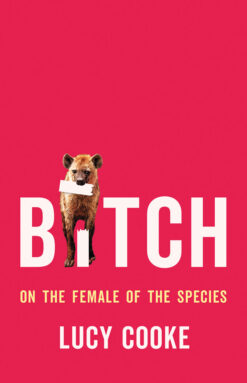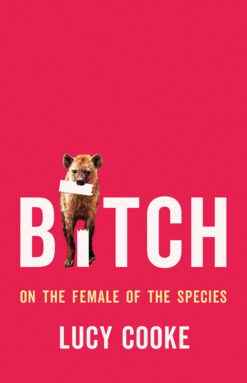This post was originally published on this site
Bitch
Lucy Cooke
Basic Books, $30
To Charles Darwin, nature had a certain order. And in that order, males always came out on top. They were the leaders, the innovators, the wooers and the doers.
“The males of almost all animals have stronger passions than the females,” Darwin wrote in 1871. “The female, on the other hand, with the rarest of exceptions, is less eager.” The founder of evolutionary theory posited that throughout the animal kingdom, males are active, females are passive, and that’s pretty much that. Females, in sum, are boring.
That’s poppycock, Lucy Cooke writes in her latest book, Bitch. This blinkered view of nature as a man’s world was conceived and promulgated by Victorian men who imposed their values and world view on animals, she says. Cooke, a documentary filmmaker and the author of The Truth About Animals and two children’s books (SN: 4/14/18, p. 26), has traveled the world and met scientists who are exposing the truth about the sexes. She takes readers on a wild ride as she observes the ridiculous mating rituals of sage grouse, searches for orca poop (to monitor sex hormones) and watches female lemurs boss around males.
Through such adventures, Cooke learns that females are anything but boring. “Female animals are just as promiscuous, competitive, aggressive, dominant and dynamic as males,” she writes.
That may not sound radical to today’s feminists, but in the field of evolutionary biology, such a pronouncement has long bordered on the heretical. Generations of biologists have focused on male behavior and physiology, on the assumption that females are little more than baby-making machines to be won over by the strongest, showiest males.
Historically, when females did something potentially interesting, like exercise leadership over their social groups, many scientists scratched their heads and chalked it up as an aberration. When behavior didn’t fit the mold, like female-dominant spotted hyenas or peaceable male pinyon jays, it was either ignored or shoehorned into existing theory. For instance, ornithologists posited that aggressive female pinyon jays must suffer “the avian equivalent of PMS,” Cooke writes. The reality is that pinyon jays have a complex social hierarchy that doesn’t include the “alpha male” that scientists had expected. In recent years, scientists (many, but not all of them, female themselves) have begun to challenge Darwinian dogma about the sexes and submit it to rigorous testing.
Cooke draws on this recent science to systematically take down myths about females. She begins by asking what biological sex actually is — what makes a male a male, and a female a female — and shows that it’s far less black-and-white than we’ve been led to believe. Take the case of the European mole, in which the female sports gonads called ovotestes that produce eggs during the short breeding season, and testosterone the rest of the time. As a result, the female’s genitalia look just like the male’s, with a penislike clitoris and a vagina that vanishes after the breeding season.
The mole is just one example of sexual ambiguity among many that Cooke outlines. As the science of recent decades has revealed, even the genetics of sex is far more complicated than having either XX or XY chromosomes (which themselves are just one of many genetic systems for determining sex across the animal kingdom). In humans, males and females have the same set of about 60 sex-determining genes, which can create either testes or ovaries. Because of shared biology, the sexes are far more alike than they are different, and they exist in more of a continuum of bodies and behaviors than many people may be comfortable with.
Cooke also takes on many other ways scientists have misread sexual dynamics over the years, such as the myth that males benefit evolutionarily from promiscuity and females from monogamy. She addresses misconceptions about sexual cannibalism and animal genitals, complete with silicone replicas of animal vaginas. And she challenges ideas about the maternal instinct. As Cooke points out, males and females share the same neural circuitry, leading to fascinating experiments that stimulate certain nerve cells to flip male mice from infanticidal to doting dads.
In short, Cooke demolishes much of what you probably learned about the sexes in biology class. This may be disconcerting, even confronting for those who feel comfortable in the warm embrace of Darwinian order. But it’s also exciting, and fascinating, and very well might change the way you see the world.
Buy Bitch from Bookshop.org. Science News is a Bookshop.org affiliate and will earn a commission on purchases made from links in this article.

